|
Pepper Tree Days in Fillmore
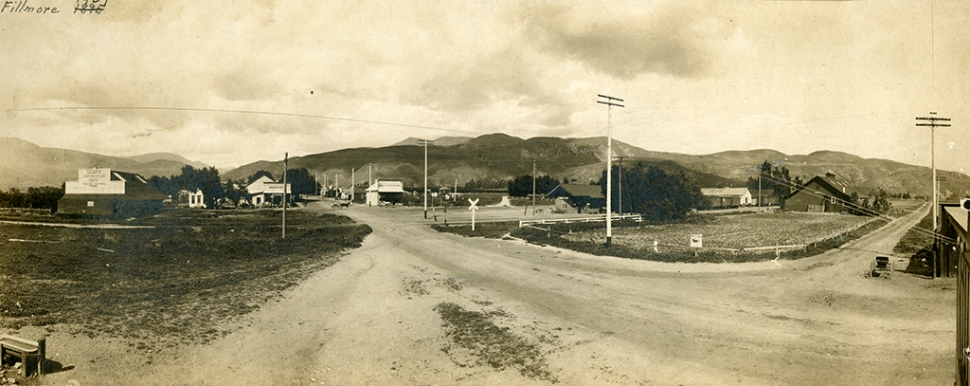 Central Avenue in 1907 before Pepper trees were planted. By 1908 Central Avenue had Pepper trees along both sides of the street. In 1914 the street was repaved and by 1917 the city discovered the tree roots rising and cracking the sidewalks and street. Photos courtesy Fillmore Historical Museum. By Gazette Staff Writers — Wednesday, June 15th, 2022
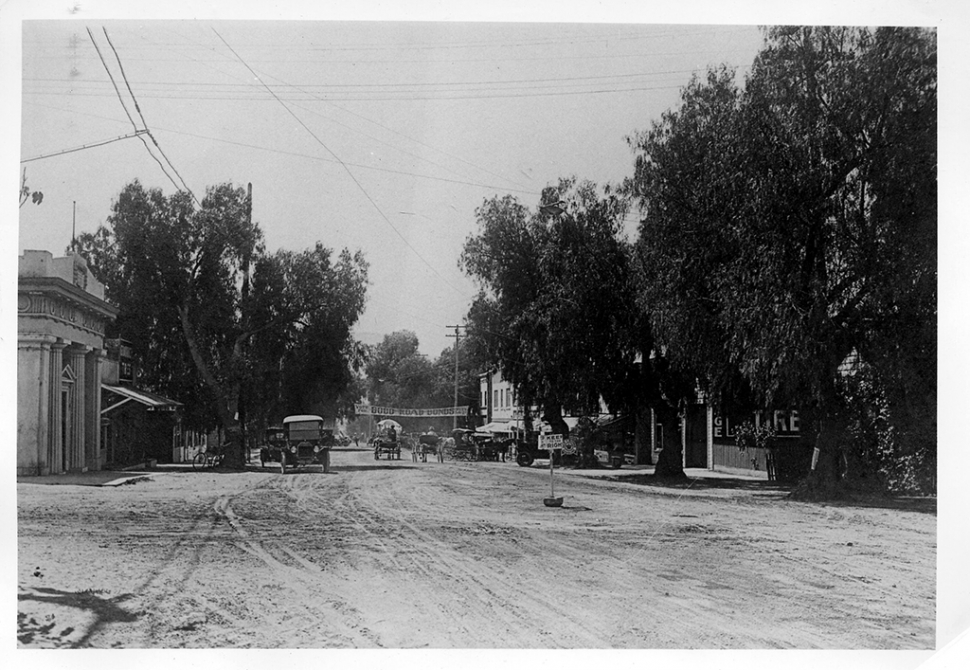 Central Avenue Pepper Tree Days before paving in 1915. 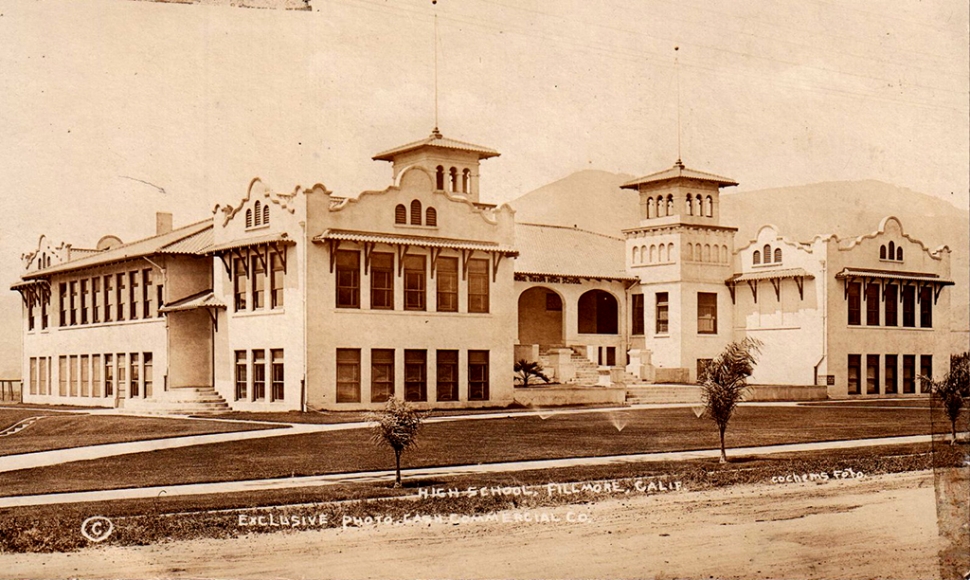 In the late 1930s a local businessman and farmer, R. A. Fremlin, suggested Palm trees along Central Avenue, just as they did in 1911 when they built the first high school. 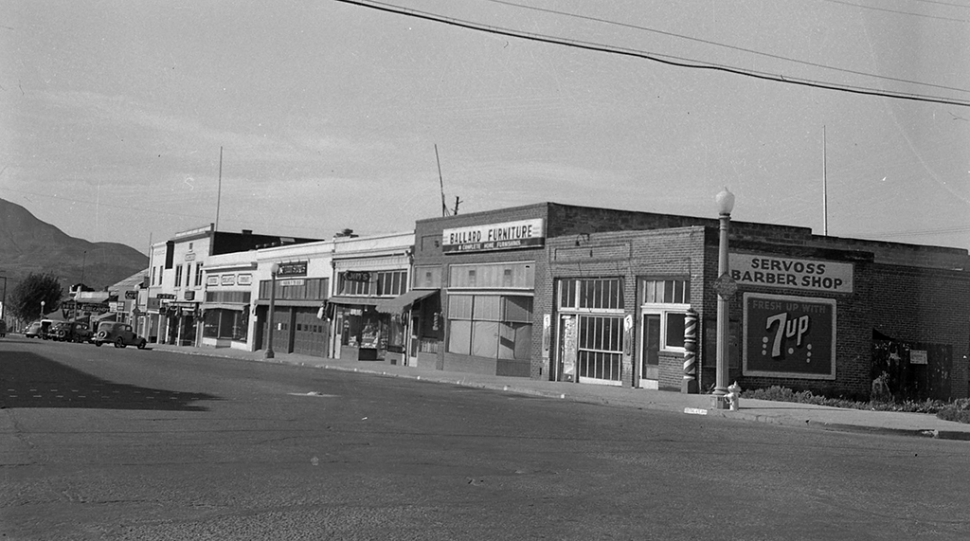 In 1940, not a single tree downtown. 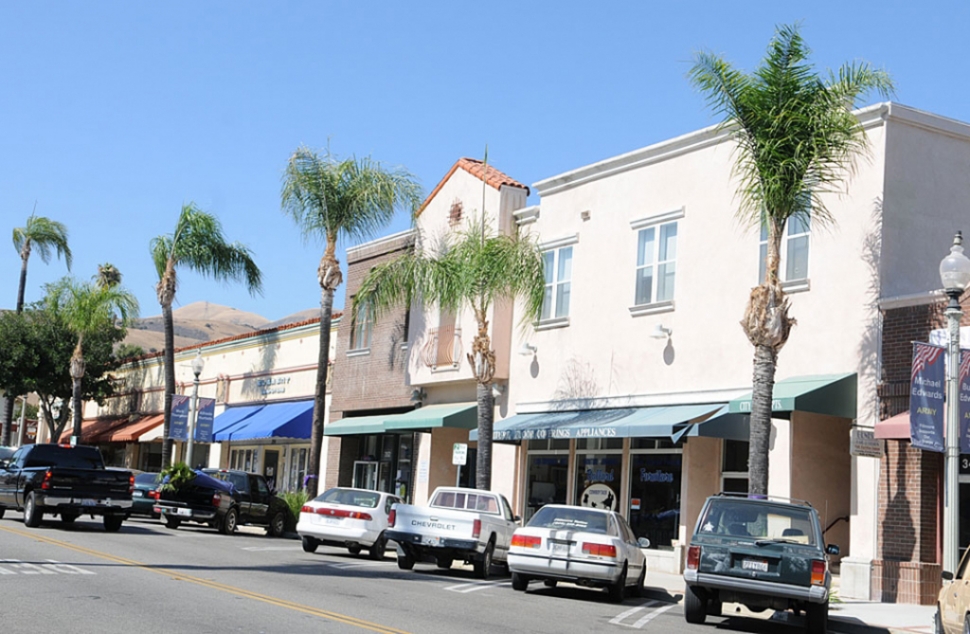 Central Avenue in 2012 with Palm Trees still along the street. Courtesy Fillmore Historical Museum Every now and then an event at the Fillmore Historical Museum sends us researching a specific subject from Fillmore’s history. The near miss of our utility building by a broken pepper tree limb in May, 2022, suggested some research into why these huge, nonnative trees were planted here and when. California has plenty of native sycamore and oak trees. Fillmore still has a group of large sycamore trees on Kensington Ave. They served as the location of a corral used by Basque sheep shearers before the city was established in 1888. The sycamores grew along the edge of Pole creek which in those days crossed Fillmore from Pole Canyon and dropped into Sespe Creek on the west. Kenney Grove was an oak grove under whose branches Native Americans and then newly arrived settlers held celebrations. Museum founder, Edith Moore Jarrett, seemed to have had a great affinity for the pepper tree. In a chapter titled “Trees That Made History” from her book, “Old Timer’s Tales of Fillmore” she wrote that the trees began appearing in our little part of the valley in about 1886. Squire Tietsort planted pepper tree berries and around his home at the top of Foothill in 1889. It is entirely possible that the pepper trees on Central Ave. across from the library were planted at the same time. By 1912 Central Ave. was almost completely shaded by large pepper trees. Schools used them as well to shade activities on the grounds. Mountain View School, Bardsdale School and eventually Sespe School, today’s School District Offices, had numerous pepper trees. Whether it was hot, cold or windy, students ate lunch on benches under the pepper trees at Sespe School well into the 1960s until a cafeteria was built. The trees were located on the western side of the school between the front lawn and the playground about where the temporary classrooms are currently located. They provided shade, but you had to pick the occasional pepper tree berry or leaf out of your sandwich. Jarrett also noted that the pepper trees in her school days provided teachers with the occasional switch used to promote quiet and “encourage scholarship.” By 1908 Central Ave had pepper trees on both sides of the street. But, as many a homeowner has discovered to their chagrin, pepper trees roots and branches cause all sorts of problems. The city fathers had paved Central Avenue in 1914, but by 1917 they discovered that the roots of the trees had begun to raise those new city sidewalks. They also felt that the pepper trees looked “countrified”. So the city council determined to cut them all down. The only dissenting voice was Constable Owen Miller. He owned a hotel on the west side of Central and refused to let the city remove his pepper tree. He was so adamant that he sat on the porch of his hotel with a shotgun across his lap and dared anyone to try to remove it. What to do? Because he was a constable, he had to enforce the law, so the city council, headed by Mayor Everett Pyle, decided to send him on a trip to Lockwood Valley after reports of trouble in the area. While he was gone they took the tree down. He was infuriated. He put up a sign that read “Everyone welcome here but Everett Pyle; Everett Pyle Keep out.” The sign stayed in place for months. Once those huge pepper trees were removed, the business block of Central Ave. was treeless for years. By the late 1930s a local businessman and farmer, R.A. Fremlin, was getting tired of the bare, hot sidewalks. He suggested planting palm trees. There had been palm trees all over town for many years as shown in many of the early photos. Palm Trees had been planted in front of the High School when it was first built in 1911. The palms grew well but eventually movie production companies began to complain that the palm trees made the downtown area look more like California and less like the generic Midwestern streets which were often preferred when filming. One production crew solved the problem by strapping evergreen trees to the palm trees in an attempt to disguise them for the camera. So in July, 2012 the city began removing the palm trees between Sespe and Main Streets. Eventually trees were returned to Central Ave in large planters, again offering some shade to weary shoppers on hot summer days. There are still plenty of pepper trees on Fillmore’s streets offering shade on hot days, but perhaps parking under one should be avoided on hot, east windy days. |
